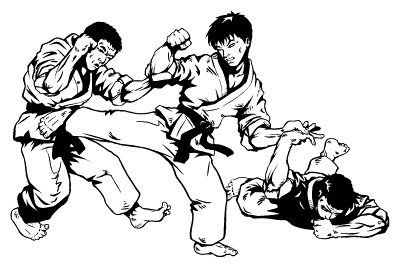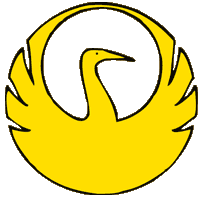What is actually self-defence?
The self-defence is the general term for a kind of the martial art consisting of several different styles, from which there is selected the best and most practical ones for a realistic conflict with the opponent. The largest representatives of the self-defence from old styles are Judo, Aikido and Karate and e.g. Krav Maga or military style Musado, Systema from modern ones. The largest representative of the self-defence is probably Jiu Jitsu. The present time brings different offshoots from the classical self-defence,and their characteristic is given by a country, where it was originated, by character of the self-defence or by specific orientation (military, Israeli, Brazilian etc.) In China, the self-defence is called Chin na (Čin na) and it is necessary to note that despite a variety of current types of the self-defence, China is just the origin of creation of techniques.
 Dividing of the word self-defence already outlines its nature .... defence of oneself. It can concern any martial art or sport, which will teach you to defend yourself. From the practical point of view it concerns a moment, when a person must immediately decide in case of the assault or threatening assault, how he/she copes with that situation. It is especially the matter of consideration of the situation and usage of self-defence technique in order to repulse the opponent´s attack and minimize consequences of the situation. By training of self-defence and repeating of its technique you will get an ability for immediate decision on usage of technique against the made attack at the exact time ... it means that you will choose the given technique without thinking, what to do just at that moment. The further positive standpoint is getting a self-confidence and self-assurance that everyone gets in concurrence with training (this also relates to training of all martial arts).
Dividing of the word self-defence already outlines its nature .... defence of oneself. It can concern any martial art or sport, which will teach you to defend yourself. From the practical point of view it concerns a moment, when a person must immediately decide in case of the assault or threatening assault, how he/she copes with that situation. It is especially the matter of consideration of the situation and usage of self-defence technique in order to repulse the opponent´s attack and minimize consequences of the situation. By training of self-defence and repeating of its technique you will get an ability for immediate decision on usage of technique against the made attack at the exact time ... it means that you will choose the given technique without thinking, what to do just at that moment. The further positive standpoint is getting a self-confidence and self-assurance that everyone gets in concurrence with training (this also relates to training of all martial arts).
The self-defence arises from the practical fight and from practical usage of techniques. Stances and practice of falls belong to general skills. The stances are important because they provide the body a stability and ability to carry out the defence or counter-attack. The stance should not indicate a preparation for the fight or intention to use an individual technique. The most applied and practical stance is the one to the shape of letter "A" (to the width of shoulders) with the leg forward. This stance should be with the side at the angle of appox. 45° in order to provide the least chance as possible to hit the attacked person´s body. There should be the same leg and arm in the front. Legs are moderately bent and on full feet. The sight should not be of the individual opponent´s spot (not to watch only legs or hands), but it should be peripheral of all his/her body. The falls are not only the important preparation for the self-defence from the point of view of injury prevention but also for the common life or other sports as well. We classify three basic falls according to the direction: forward, backward and side falls. The body must be firm during falling and at the moment of the impact there must occur a so called dynamic smacking by hands to the ground. We will continuously pass over to techniques, which include hits, punctures, parries, blocks, kicks, pulls, throws, bars, holding and freeing techniques. The important part is also the self-defence against different weapons as bars, knives or firearms.
The very important aspect is the legal assessment, which is set forth in the Criminal Code no. 40/2009 under the section 29 as the circumstance excluding the illegality – NECESSARY DEFENCE. Not only everyone, who deals with the self-defence, but also a person, who has never practised any martial art (and for example works as a night salesperson at the petrol station) should know the formulation of the necessary self-defence and its practical interpretation, because you do not know, when you can be attacked and incorrectly used self-defence in the incorrect time can have an impact on your personal life.
And now a little bit of the legal interpretation ... the necessary defence according to Section 29 as amended
(1) The act otherwise criminal, by which someone repulses the directly threatening or continuing assault on the interest protected by the criminal law, is not the criminal act.
(2) The necessary defence is not a case if the self-defence was evidently inappropriate to the method of the assault.
From the legal point of view the assault itself must meet three conditions namely that: a) the assault threatens relations and interests protected by the Criminal Code (directly stated), b) the assault threatens or continues and c) the defence must be adequate to the assault method
ad a) the assault is the wilful illegal act
ad b) the assault must be realistic and it must not concern the so called presumed assault, when the attacked person defends oneself before the attacker actually started to attack. The defence MUST be made at the time , when the assault threatens or continues and it does not concern the necessary defence, when for example the attacker has already left the place and the attacked person catches up the attacker and takes the right into his/her own hands. In this case the assault has not been already imminent and it concerns the retaliation, which is legally punishable
ad c) the law allows in the necessary defence that the consequence from the made defence can be larger than the consequence that was imminent. But there must not be a gross disproportion between them. As the example of the gross disproportion is stated that the attacker wants to physically (ba hand) to attack the other person, who will shoot him/her with a legally held weapon.
During the legal assessment of the necessary defence there shall be also considered other circumstances as e.g. Whether the attacked person was physically weaker than the attacker (a woman, child etc.), sanity etc.
